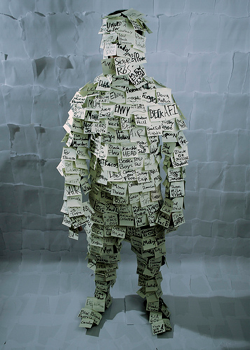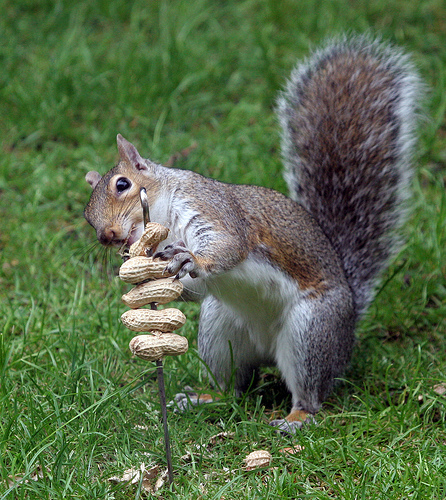Make one task pile to rule them all
[Photo by exfordy via Flicker]
Not long ago, I wrote a productivity series called “Note to self.” In one of the posts, I talked about how priorities are, in my opinion, a much better way to sort tasks by importance than due dates.
I think of priorities as being a common thread that links all of my current projects and activities together. No matter the context or location, some tasks are more important than others.
I find that it’s very useful to be able to see all of your priorities in one location so that they are easily and routinely reviewed.
Having a single “dashboard” view helps me avoid one of the worst pitfalls of list making: having multiple piles of priorities.
It’s so easy to fall this trap, and rarely is it obvious as it happens. It’s easy because it happens naturally. Like a squirrel hiding nuts, I think our natural instincts drive us to create piles of to-do lists all over the place – both large and small.
But unlike a squirrel, the more nuts you crack and the fewer you hide, the better off you’ll be this winter. Actually, you’ll be in great shape year-round.
Why things get squirrelly when you make multiple piles
There are really three problems with having more than one task list. Hopefully these seem obvious:
Problem 1. Having more than one list introduces an extra decision: which list do I work on now?
If you have more than one list, you’ve effectively added an additional dimension of complexity to your productivity workflows. It’s no longer enough to work off a task list – you need to know which one to attack next, it’s physical location, and it’s relative importance to your other lists.
Picking the next list requires that you allocate some amount of energy and focus to that task -- picking the list. You may not even realize you’re making this decision, but if, for example, you’ve ever been momentarily torn between working through a list of flagged email versus working on a project, you have.
I suspect for many people, this extra decision happens throughout the day. I’ve been there. It’s like trying to get things done wearing ankle weights.
Problem 2. If you have more than one list, you never really know how done you are.
This can really suck, especially if you’re managing the same project on more than one list. It’s a sure way to introduce anxiety and disappointment in your workflows: anxiety from wondering where you stand on things; disappointment when you discover you missed something important on the other list(s).
Problem 3. The more lists you have, the more likely you’ve put the same thing on two or more of them.
This also induces anxiety because you’re consistently confronting yourself with lists that look bigger than they really are. Moreover, it’s pain in the ass to have to check the same thing off two or more times.
Where are these lists, and how do they occur?
If you don’t have all of your tasks in one central location, you’re probably making multiple piles. Essentially you’ve created more than one task system.
Maybe it’s obvious – you like to tinker and have half your tasks in Things and others in OmniFocus. Or maybe you just use an electronic system but your monitor is covered in sticky notes too.
 I’m not trying to tell you that you’re a bad person or that you’re wrong. But am telling you that life is a lot simpler if your to-do list is in one place.
I’m not trying to tell you that you’re a bad person or that you’re wrong. But am telling you that life is a lot simpler if your to-do list is in one place.
When you have 10 things listed, and you check one off, you know you have 9 left. And if you’re effectively using priorities, you know that the next one in line is more important than the other 8.
On the other hand, if you have more than one pile, somewhere in your mind, you know that there’s more to do. It nags, gnaws, and nibbles at your sanity robbing you of focus that’s better spent on things outside to-do lists.
[Photo by William K. via Flicker]
A practically efficient approach to simplifying your task lists
- Learn to identify hidden lists.
- Consolidate multiple lists into one.
- Stand guard and leverage the clarity you experience from having a single list. Stay in the habit of zapping future lists as they bloom (and they will).
This stuff is really more art than science, and much of this post is intentionally vague because I recognize that there are so many task systems available to humankind in the 21st century.
But if there is an underlying, universal theme to my message here, it’s this:
Simplifying the overarching GTD layer that you impose on your workflows generally makes you better.
Personal task and project management comes with a cost: it has to be maintained. Make sure you’re not overspending your time and focus on this layer.
Believe me when I say that the easier you make it on yourself to digest priorities, the more likely you are to act on them and bring your future and past self in harmony.

